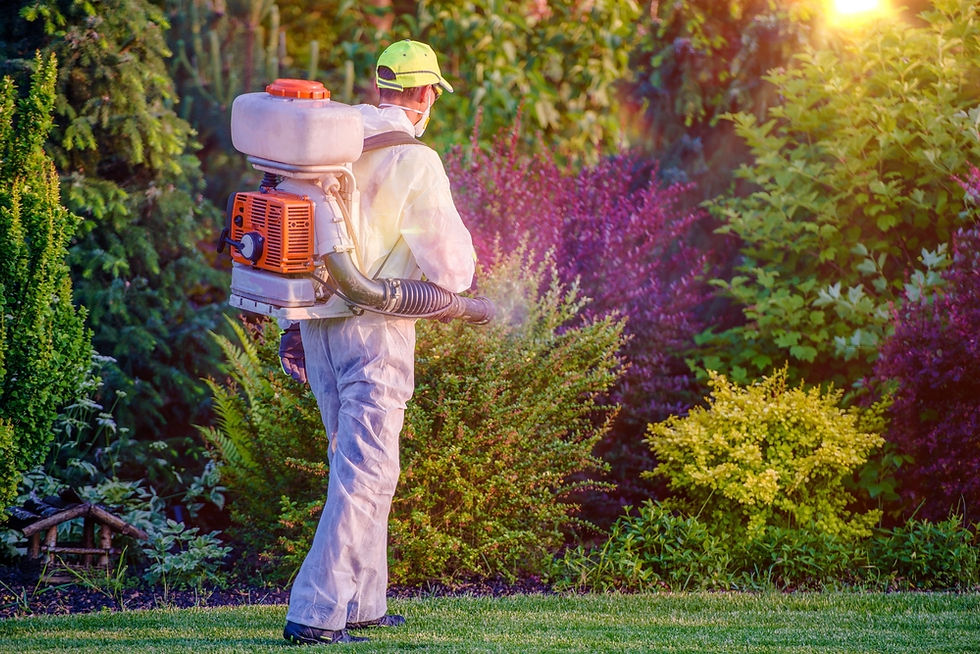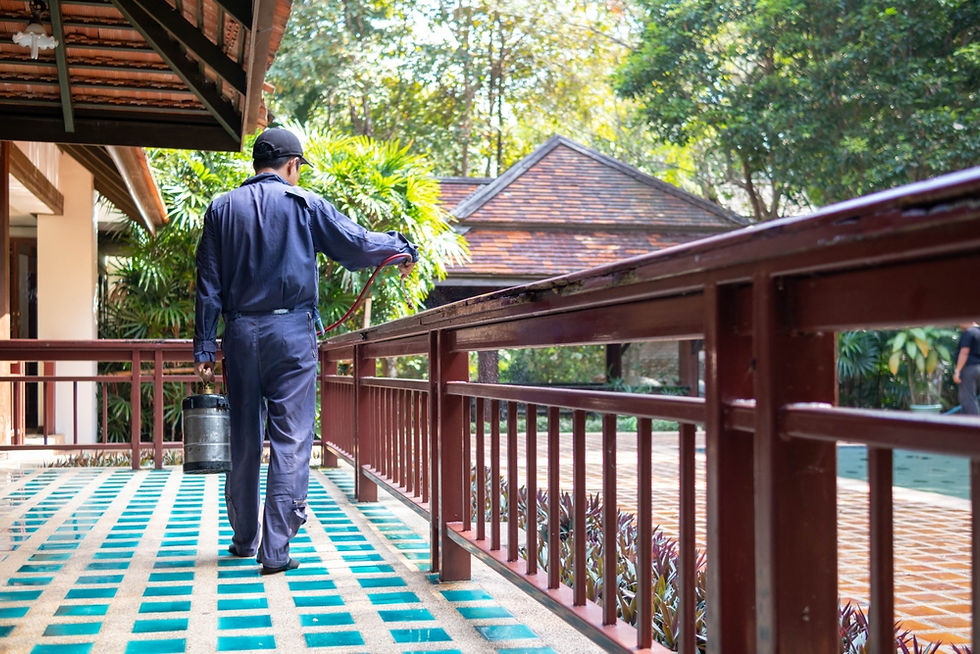Innovations in Termite Control: A Proactive Approach to Safeguard Your Property
- Lauren Bracy
- Aug 5, 2024
- 4 min read
Have you ever caught yourself scanning the timbers of your home anxiously following the discovery of tiny, winged, uninvited guests? Termites. The very word sends a chill down any homeowner's spine. These relentless creatures, small though they may be, can wreak significant havoc. But, how can you keep these destructive pests at bay? What are the latest, innovative methods ensuring termite control? Are these new approaches safe for your family and the environment? We're going ahead to demystify these concerns for you. This comprehensive tutorial will navigate the world of advanced termite control techniques while emphasizing environmental safety and your peace of mind.
To maintain the integrity of our tiniest castles (our homes), we must stay vigilant against potential threats. Unfortunately, there is no one-size-fits-all solution as dealing with termites necessitates a tailored approach, considering various factors like environmental conditions, regional termite species, and the design of your home. In our exploration, we will diverge from the traditional reactive methods and focus on proactive and preventative measures, aimed at long-term, sustainable solutions.
Understanding the Formidable Foe: Why are Termites a Threat?

Termites may be small in size, but their cumulative damage can be immense. The primary reason behind this threat is their colony’s organization and sheer numbers. Operating in a caste system, they have workers, soldiers, and reproductives, each playing distinct roles. Termites silently eat away at wooden structures, damaging foundations and causing costly repairs.
The most alarming aspect of termite infestation is their stealth. Often, by the time homeowners notice the signs of damage, they’ve been at work for years. Persistent vigilance and regular inspections are crucial for preventing the heavy financial toll of an unchecked termite infestation.
Lastly, while most termite species stick to feeding on dead wood, some types are more aggressive, attacking live plants, leading to significant losses in agriculture and horticulture fields. Grasping the nature of this threat is the first step towards effective termite control.
When to Start Termite Control Measures?
Prevention is always more sustainable and cost-effective than cure. Instead of waiting for visible signs of termite damage, start termite control measures at the initial building and designing stage of your home. Knowledge of termites and their patterns can inform the use of specific materials and construction designs that deter these pests.
Opt for regular professional inspections, especially if your home is in a region known for termite activity. The frequency of such checks can depend on your property's size, age, and construction materials used.
Lastly, be vigilant to the signs such as discarded wings, piles of tiny feces, and mud tubes on exterior walls, evidence of a possible invasion. Prompt response can limit damage and control the pest population.
What are the Innovative Methods in Termite Control?
Ground-breaking strategies for termite control include physical barriers, baiting systems, biological control agents, and modified atmosphere. Modern physical barriers comprise crushed glass, metal mesh, or extraordinarily treated soils. These methods offer a safe and non-toxic alternative to chemical control.
The latest baiting systems engage slow-acting toxicants. These allow termites to return to their colony and share the poisoned food, causing a domino effect.
Biological control agents like nematodes and fungi can potentially control termites. Nematodes are parasites that infest termite bodies, while certain fungi can infect and kill entire colonies.
Lastly, methods like fumigation and modified atmospheres are gaining popularity in stored product protection against termites. These make the stored product uninhabitable for termites, preventing their spread.
Advantages and Disadvantages of Innovative Termite Control Methods

Like every strategy, these innovative methods come with their set of pros and cons. On the plus side, these measures are more environmentally friendly and sustainable, reducing reliance on hazardous chemicals. They also offer homeowners peace of mind, an experience unhampered by constant worry about potential health risks to their family or beloved pets.
On the downside, it may take longer to observe results from these methods compared to instant 'kill' effect of most pesticides. Also, not all these techniques are feasible or available for all situations and regions, requiring professional guidance for optimal effectiveness.
Are these Methods Safe for the Environment?
While traditional termite control methods heavily rely on potentially harmful chemicals, these innovative techniques emphasize a safer, more sustainable approach. Physical barriers, baiting systems, and biological control methods pose a lower risk to the environment. They reduce soil and water contamination while reducing harm to non-target species. The effort to 'think green' while safeguarding our homes against termite onslaught is, indeed, commendable.
Conclusion:
Keeping termites at bay requires knowledge, perennial vigilance, and proactive measures. A shift from reactive to preventative mindset and sustainable methods can have a hugely positive impact on termite control. This comprehensive guide aims not just to inform you but steer you towards the path of responsible and sustainable termite control.
Through innovative techniques like physical barriers, advanced baiting systems, and biological controls, we can ensure a better, safer future for our homes and the environment. Remember, the key lies not merely in battling these formidable foes but doing so responsibly, without causing undue harm to our precious ecosystem. Let’s pave the path to a termite-free abode, maintaining the sanctity of our homes, health, and habitat.








Comments